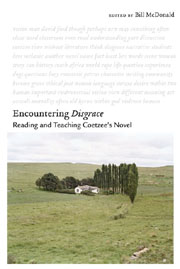Book contents
- Frontmatter
- Contents
- Acknowledgments
- Introduction
- I Reading Disgrace
- 1 “We are not asked to condemn”: Sympathy, Subjectivity, and the Narration of Disgrace
- 2 Beyond Sympathy: A Bakhtinian Reading of Disgrace
- 3 “Is it too late to educate the eye?”: David Lurie, Richard of St. Victor, and “vision as eros” in Disgrace
- 4 Disgrace and the Neighbor: An Interchange with Bill McDonald
- 5 To Live as Dogs or Pigs Live Under Us: Accepting What's on Offer in Disgrace
- 6 Tenuous Arrangements: The Ethics of Rape in Disgrace
- 7 Dis(g)race, or White Man Writing
- 8 Clerk in a Post-Religious Age: Reading Lurie's Remnant Romantic Temperament in Disgrace
- 9 Saying it Right in Disgrace: David Lurie, Faust, and the Romantic Conception of Language
- 10 The Dispossession of David Lurie
- II Reading Disgrace with Others
- Works Cited
- Notes on the Contributors
- Index
1 - “We are not asked to condemn”: Sympathy, Subjectivity, and the Narration of Disgrace
from I - Reading Disgrace
Published online by Cambridge University Press: 12 September 2012
- Frontmatter
- Contents
- Acknowledgments
- Introduction
- I Reading Disgrace
- 1 “We are not asked to condemn”: Sympathy, Subjectivity, and the Narration of Disgrace
- 2 Beyond Sympathy: A Bakhtinian Reading of Disgrace
- 3 “Is it too late to educate the eye?”: David Lurie, Richard of St. Victor, and “vision as eros” in Disgrace
- 4 Disgrace and the Neighbor: An Interchange with Bill McDonald
- 5 To Live as Dogs or Pigs Live Under Us: Accepting What's on Offer in Disgrace
- 6 Tenuous Arrangements: The Ethics of Rape in Disgrace
- 7 Dis(g)race, or White Man Writing
- 8 Clerk in a Post-Religious Age: Reading Lurie's Remnant Romantic Temperament in Disgrace
- 9 Saying it Right in Disgrace: David Lurie, Faust, and the Romantic Conception of Language
- 10 The Dispossession of David Lurie
- II Reading Disgrace with Others
- Works Cited
- Notes on the Contributors
- Index
Summary
Sympathy has everything to do with the subject and little to do with the object, the “another” … There are people who have the capacity to imagine themselves as someone else, there are people who have no such capacity (when the lack is extreme, we call them psychopaths), and there are people who have the capacity but choose not to exercise it … [T]here is no limit to the extent to which we can think ourselves into the being of another. There are no bounds to the sympathetic imagination.
— J. M. Coetzee, Elizabeth CostelloThe “sympathetic imagination” — the ability to recognize, relate to, and enter the subjective experience of another being — is of the greatest importance in the work of J. M. Coetzee. Long before the term appears in Elizabeth Costello we see this capacity — or lack thereof — as a central issue in many of his books, from the demonizing of the nomads in Waiting for the Barbarians, through the developing sympathies of Mrs. Curran in Age of Iron, and even in Coetzee's own childhood as represented in Boyhood and Youth. But nowhere, arguably, does he deal with the issue as directly as in Disgrace.
The challenge is made explicit early in the novel as David Lurie lectures his students on the characterization of Lucifer in Byron's poem “Lara.” Already a self-consciously Byronic and Luciferian character, Lurie delivers this talk during his own fall from grace, at the moment when his private transgressions first flare into public scandal.
- Type
- Chapter
- Information
- Encountering 'Disgrace'Reading and Teaching Coetzee's Novel, pp. 15 - 47Publisher: Boydell & BrewerPrint publication year: 2009



